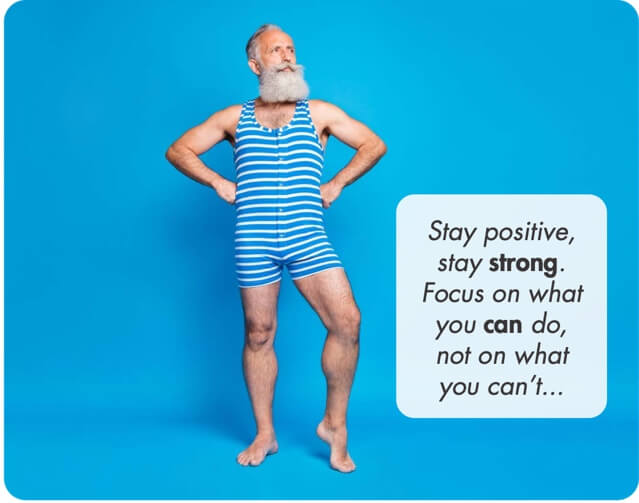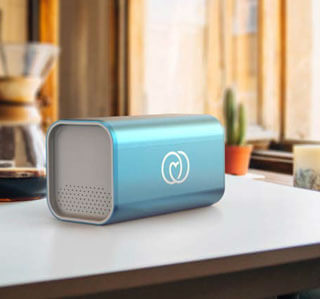
Travelling With Rheumatoid Arthritis

ABOUT THIS GUIDE
Going on holiday soon? Travel has become increasingly accessible, and a chronic disease such as arthritis is no longer a sentence to inactivity. Here are a few tips that will make your trip easier. Traveling with arthritis is sometimes a bit more difficult than with other pathologies, but with a bit of good cheer and preparation, you’ll be able to travel just about anywhere you want. This guide to traveling with rheumatoid arthritis or ankylosing spondylitis was developed by Uwe Diegel with a team of specialists and international medical consultants. We try to provide you with information that is factual and current. If you have any comments/suggestions/ questions about arthritis, please login to our Facebook page www.facebook.com/medactiv.com.au (don’t forget to like us) or visit us on www.lifeina.com.au.
ABOUT UWE DIEGEL
Uwe Diegel (born 1965 in New Zealand), is a specialist in various forms of medical diagnostics such as blood pressure, temperature, asthma and diabetes. He is the holder of several patents relating to temperature and blood pressure measurement. Until the age of 26 he was a concert pianist. Following an accident that partially restricted movement in his right arm, he started a new career in medical diagnostics.
Serial entrepreneur, he entered the world of medical diagnostics in 1992, quickly developing a particular interest in cardiovascular diagnostics. His intense scientific curiosity has led him not only to develop new technologies in this field, but also to interest himself to field of medical manufacturing, industrial design and problems faced by Chinese manufacturing concerns.
 In 2009, Uwe gets interested in connected health as a means of providing better patient management. He becomes involved in iHealth, a platform that takes all the signals of the body and translates them into a meaningful format using smartphones and tablets. Uwe serves as CEO of iHealthLabs Europe until 2016. He leaves iHealth in 2016 to launch Lifeina, a company dedicated to developing new solutions for the safe transport of medication.
In 2009, Uwe gets interested in connected health as a means of providing better patient management. He becomes involved in iHealth, a platform that takes all the signals of the body and translates them into a meaningful format using smartphones and tablets. Uwe serves as CEO of iHealthLabs Europe until 2016. He leaves iHealth in 2016 to launch Lifeina, a company dedicated to developing new solutions for the safe transport of medication.
Uwe lives in Paris, France, where he runs HealthWorks Global and does fundamental research in blood pressure diagnostics. He is today considered to be a foremost expert in the field of blood pressure management and in the manufacturing of medical diagnostics devices.
Uwe Diegel has been at the forefront of international changes in healthcare technology for the last 30 years. His drive and passion for innovative technology have driven major changes in perception about healthcare. He has driven the manufacturing of medical devices to new horizons by forcing new practices in manufacturing and innovation. An internationally recognised expert in the management of cardiovascular disease and diabetes, he is continuously looking for better solutions to improve outcomes for patients. He has for the last few years spearheaded the dissemination and acceptance of connected health as a tool for providing better solutions for patients.

PREPARING YOUR TRIP
MAKE YOUR NEXT TRIP AS PAIN-FREE AS POSSIBLE
The only rule when traveling with arthritis is that there are no rules. Whatever works for you is the right rule. The stress and tension that often come with a trip can add to physical discomfort and worsen joint symptoms. But with a little research and proper planning you can reduce pain and anxiety and have a pleasant journey.
TIMING YOUR TRIP
The first thing to consider is when to go on your trip. If you know there is a particular time when you have flares (e.g., in the heat of summer or right after the holidays), avoid planning trips during that time of the year.
Schedule your departures during non-active hours to avoid standing in long lines and being jostled in crowds. Speak with the airline or resort staff to find out when the low traffic times are. (Friday through Monday is typically the busiest time in airports.) Another advantage to traveling during off-peak hours is that there are more staff members to help you based on your specific needs.
Be sure to schedule a time to recuperate and acclimate upon your arrival. Consider adding an extra day to your itinerary so you can be sure to find some rest after arriving.
Try to avoid arriving tired, stiff, and uncomfortable. Avoid rushing; provide yourself with long breaks during your trip. For example, if you are traveling somewhere internationally and have a layover, instead of just boarding the next plane, schedule a day between the legs of your flight and spend a day or two in the layover country - not only to rest, but to enjoy your surroundings.

CHOOSING YOUR DESTINATION
Be realistic about choosing a destination. Plan ahead and be practical about what your body can do. When deciding where to travel, there are two major things to consider: environment and climate. If you know you do not do well in heat and humidity, going to a tropical location in the height of summer may not work for you.
Consider the distance of your destination from your home. How long will travel take? How worn out will you feel once you get there? Also, how challenging will it to be for you to be far away if you need to get back to your doctor or to your home to recover? When possible, choose nonstop flights. That way you won’t have to walk long distances through unfamiliar airports.
Research the availability of local transportation at your destination. For example, if you want to go sightseeing, find out if there will be taxis, Uber, bus services, or other means of transportation. Resorts where everything is on one property may be a good idea for anyone with limited mobility. Find out if there is transportation from the airport to your accommodations and if it will be readily available after you disembark the plane when you may be feeling stiff and achy.
Investigate the types of activities that will be available at your destination. Consider not only what you will be doing, but also activities for the people you are traveling with. If you need to rest at a certain time, you do not want to feel an obligation to do something you’re not feeling up to in order to entertain your companions.
BOOKING A HOTEL
There are three things to consider when booking a hotel: Location, location, location.
Hotel location can be one of the key factors in making your trip comfortable. If you are going to a resort and everything will be in close proximity, just consider how far the resort is from the airport or station where you’ll be arriving. However, if you are staying in a city and will be sightseeing, you will want to know how close your accommodations are to local transportation and the places you would like to visit.
Be aware of hotel facilities. While having a spa, pool, or exercise room may help you loosen up your joints at the end of the day, there are some amenities that are just as important. First, find out if they have a restaurant and room service. This is key because if you don’t feel up to leaving the hotel at mealtime, ordering room service can be very helpful. Another way to be sure you have food and beverage on hand is to request an in-room refrigerator. It can also be helpful for refrigerating medication.
When making reservations, ask the hotel staff to tell you exactly where your room will be. Find out its distance from particular amenities and whether there are steps, ramps, or elevators near the room. When booking your room, request a location close to the elevator and on a lower level in case there is a blackout or some problem where you cannot take an elevator up or down. Also, if you are traveling alone or have an emergency, hotel staff can more quickly aid you if you are closer to the lobby.
Request a refrigerator. If you take medications that need to be refrigerated, an in-room refrigerator is a must. It can also come in handy if you need a quick snack to boost your energy level after a day of sightseeing.
Let the front desk know if you have any mobility issues, especially if you are traveling alone. If there is a fire or an emergency, they are required to make sure you have assistance in evacuating the hotel.
WHAT TO PACK
When packing medication, include prescriptions and over-the-counter remedies you think you might need. If you are having a flare-up and also have a headache, you want to avoid having to leave to find a drug store.
Pack a list of the medications you are taking and include a list of medication allergies. Make two copies of the list; leave one in your room and keep another with you.
Bring a brief medical history in case of emergency. It is easier to provide a physician with a list rather than explaining your medical history. Include the contact information for your physician and your rheumatologist.
Be absolutely sure to bring your insurance information. If you are purchasing travel insurance, check to see if they will cover a pre- existing condition. Most do not. It is best to contact your medical insurance company and ask them what to do in case of an emergency.
BOOKING A CAR
Before you hit the road, make sure that you contact your rental company and choose the right car service. There are rental car companies with special programs. For example, Avis Rent- A-Car’s Access program offers cars with swivel seats, spinner knobs and other hand controls. Check out the Society for Accessible Travel and Hospitality for additional information and resources.
GETTING THROUGH SECURITY
Canes and walkers are generally allowed, but check with the airport to make sure you are meeting the most up-to-date security requirements. Walkers and canes have to be stored during take-off and landing, but they can be returned to you during the flight so you can move around. Do not put canes or walkers in your checked luggage in case your luggage is lost. Remember to put an ID tag on your assistive devices. Canes, walkers, and medication in insulated bags do not count as your limited carry-on pieces.
LOOK FOR SIMPLE SOLUTIONS...
Bring a letter from your doctor about your medical history and the medications you take. This will provide backup if security questions you. Travel with a Travel Certificate. You can download a travel certificate on the Lifeina website at the end of this document.
BE A STAR, AND GET TREATED LIKE ONE...
Airlines are required to offer pre-boarding, wheelchair or motorized escorts through the airport to disabled passengers who ask. Call the airport for security screening assistance that may prevent you from standing for extended periods. Once onboard, get help stowing your overhead bag from flight staff or a fellow passenger. If you use a wheelchair, label it with your name, address, and destination airport -- and ask that it be loaded “last on/first off.” If you use a cane, you can take it on board with you. You’ll need to stow it at take-off and landing, but you can use it during the flight.
CHOOSE THE RIGHT SUITCASE
Select a bag on wheels with a handle that will lock in the upright position. Choose a suitcase with 4 wheels that is easy to push around. Then push the bag instead of pulling it to avoid strain on your shoulders. Nowadays, even small bags like backpacks and computer bags are equipped with wheels and can help you avoid stress on your joints.
Do not lift your bags when you are checking them, going through security, or putting them in the overhead bins. If you need help getting your bag through security, let someone from the airline know in advance that you are going to need assistance and they will be happy to help you.
Pack light. Your bags will be easier to carry. If you find that you must lift your suitcase -- into your car trunk or the overhead bin on a plane, for example -- find someone who can help. Clean out any handbags down to necessary items only to lighten your load. If you are carrying extra items such as cameras or snacks for the day, consider a sling bag that wraps across your body to reduce strain on your back and shoulder. The best bet is to lighten your load and use a fanny pack to carry items you must have.
BRING A FRIEND... OR THE NEXT BEST THING
Ideally, you want to travel with a friend who can help you through all those little irritating situations and help you carry your luggage. However, if this is not possible don’t be embarrassed about taking weird contraptions to help you get through; my rule is: Whatever works for you is best. So, if you need to use a cane (there are some funky new folding models), a walker, a travel chair with a built in whoopy- cushion, beaded seat cover, folding reacher or something as simple as an extra pillow for back support, just do it...
Bring an inflatable pillow with you on the plane to cushion your seat or to act as a back or neck support. Blow up pillows take up very little room and allow you to adjust the level of support on long flights.
THE JOURNEY ITSELF...
STAY COOL AND WARM
Hot and cold therapies are great for pain and stiffness. Stock up on heat wraps and pads, portable ice packs and topical cream. Choose hotels with heated pools, hot tubs and saunas.
BE MEDICATION READY
If you are travelling abroad and taking your anti TNF therapy with you it’s important to make plans to keep it at the correct temperature during the journey and at your destination. At the end of this guide is a section of useful links for the transport of your medication. Always keep your medication with you and not in checked bags. If your bag is lost or delayed it might ruin your holiday if you don’t have your medication. Put a medication reminder on your phone to remind you when to take your medication. Check ahead to find the closest pharmacy to where you’re staying. You may even want to ask your doctor for an extra written prescription to take with you as a backup.
LEARN A COUPLE OF WORDS IN A FOREIGN LANGUAGE
It may be worthwhile finding out what ankylosing spondylitis, rheumatoid arthritis or any other medical conditions you have are called in the country you are travelling to in case there’s an occasion (such as a medical emergency) where you need to let people know what you have.
BE ON THE MOVE
Sitting still for long periods can cause stiffness. Plan road trips with time for rest stops. Move around on a plane or train when it’s safe. Too unsafe or too achy to stand up? Try simple stretches while seated, or other exercises like isometrics, which involve flexing and holding muscles for five to six seconds. When you fly, take a train, or ride a bus, try to get an aisle seat so you can stretch and get up and walk.
ASSISTANCE
Always tell your airline, travel agent or tour operator when you book if you are going to need assistance when you travel.
CODEINE-BASED MEDICATIONS
Some prescription medications, including codeine-based medications, are illegal in some other countries. Check with the embassy or consulate of the countries you are travelling to and find out if any of your medications are illegal there.
TRAVEL CERTIFICATE
Always travel with a Medical Travel Certificate if you are taking medication with you. This completely free document is completely meaningless yet essential. It is a document that states that you are affected with a chronic disease and that you are treated with medication that is injected and that you are allowed to carry injection needles and drugs and that these drugs must be kept between 2 and 8°C during travel. However, having it with you when you go through customs makes everything much easier. You can download it for free on the MedActiv website here.
COPIES OF YOUR PRESCRIPTIONS
Carrying copies of your prescriptions in your hand luggage will be important if you are stopped and questioned about the drugs you are carrying. Also leave a copy of your prescriptions at home with a friend or family member. If you lose your medications or are gone longer than expected, have them send you your prescription.
EUROPEAN HEALTH INSURANCE CARD (EHIC)
If you are travelling to Europe, this card will entitle you to free or low cost healthcare in most countries. You can apply for one here.
CHOOSE MEALS CAREFULLY
Most airport and rest stop food choices are high-fat, high-calorie processed foods that promote inflammation. Carry healthy snacks, drink plenty of water and go easy on alcohol and caffeine that can aggravate inflammation. Need a break from just water? Try natural cherry juice that can help reduce inflammation – but avoid options with added sugar.

TAKE IT EASY !
FOOD POISIONING
Anti TNF therapy and some other medications may make you more susceptible to food-borne infections, which can result in food poisoning and other serious illnesses. Food to avoid include:
- salads, such as lettuce
- uncooked fruits and vegetables, unless they have been washed in safe water and peeled by you
- fresh or cooked food that has been allowed to stand at room temperature in warm environments, or that has been exposed to flies, such as in an open buffet
- unpasteurised milk, cheese, ice cream and other dairy products
- raw or undercooked shellfish or seafood
- food from street traders, unless it is has been recently prepared and is served hot on clean crockery

INFECTIONS AND COMMUNICABLE DISEASE
These can be more severe in people who are on anti TNF therapy or other medications that affect the immune system. Therefore, you may need urgent assessment and treatment, if you have come into contact with someone who has one of these infections. Remember different parts of the world have more risk of certain infectious diseases than others.
MEDICATION
Make sure you have sufficient medication to cover the entire period you will be away. It may be an idea to take double the amount you’ll need for your trip and put one set in your hand luggage and the other in the luggage of your travel companion. This way you’ll have a backup if you were to lose some of your drugs during your trip. Always carry your medication in a correctly labelled container as issued by your pharmacist.
TRANSPORTING YOUR MEDICATIONS
MedActiv and Lifeina have developed a range of solutions to keep your insulin at the right temperature at all times. These solutions are divided in two major technologies, which are cooler bags and mini fridges.

LifeinaBag medicaton transport bags are discrete and offer protection of 24 hours between 2 and 8°C.
EASYBAG
The EasyBag keeps medicines cool for 4 days without electricity. The EasyBag kits use gel crystals that cool down medication when in contact with water. To activate the EasyBag simply immerse it in water for 40 seconds. The crystals in the panels of the EasyBag turn into a gel that stays cool for three to five days (depending on the ambient temperature) based on an evaporation process that will keep your medication at a temperature between 16 and 25°C (up to an ambient temperature of 38 ° C). Generally, insulin can be kept for about 3 weeks at a temperature between 16 and 25°C.
ICOOL
The iCool bags use a new generation of chemical ice packs that do not sweat and have a longer thawing point than traditional ice packs. The iCool bags can keep medication between 2 and 8°C for up to 36 hours, depending on the model chosen. They also include separate compartments for transporting your accessories. Available under both the MedActiv (iCool) and the Lifeina (LifeinaBag) brands, these bags are the perfect companion for longer trips.
LIFEINABOX
LifeinaBox is the world’s smallest intelligent fridge for the safe transport of fragile medications. Connected to an application that monitors the temperature of your medication, and with a built-in 6-hour battery, LifeinaBox is truly the best possible example of Human Centered Design.
SHARPS BOXES
In addition to your anti TNF medication you will require a travel size sharps box to throw away used needles or syringes (if you are using them). Most pharmacies will give these to you for free, so discuss it with your local pharmacy.
USEFUL HINTS
For environmental reasons, more and more hotels are using coded cards to open the doors of their rooms and these cards are also often used as a switch to turn on and off the electricity in the room. This means that when you leave your hotel room, you take your card with you and turn off all the electricity in your room (including the little bar fridge where you keep your medications cool). To work around this problem, just use any old plastic card (a gym membership card, business card, etc.) to switch on the power in your room. Leave it permanently in the room so that the electricity stays on.
If you need to freeze the ice packs of your travel bag before leaving the hotel, the refrigerators in the hotel rooms are generally not of a very good quality and will not completely freeze your ice packs. So instead of using the bar fridge in your room, go down to the hotel bar and ask the helpful staff to freeze them for you. After all, they always need ice in bars to make those delicious gin tonics and therefore have high quality freezers.

USEFUL SITES
European Health Insurance Card
Google translate
MedActiv (transport solutions for medication)
Lifeina (the world’s smallest fridge for transporting medication)

ABOUT LIFEINA !
Lifeina is an innovative startup that aims to be a global leader in the development of transport and storage solutions for sensitive medication. Our products are designed to give users the freedom to travel knowing that their medications are kept at exactly the right temperature.
The Lifeina solutions are specially designed to bring added value to the medications they are made for. Strategically located in Paris, we have the reputation of always anticipating the needs of our customers with an approach that is based on the total satisfaction of the end-user of the medication.
Our team of experts includes physicians, patients and engineers who are dedicated to finding better solutions for the transport and storage of sensitive medication.
EXCEEDING YOUR EXPECTATIONS FOR THE TRANSPORT AND STORAGE OF MEDICATIONS
For Uwe DIEGEL, creator of Lifeina, the company represents a personal investment. “In 2003, my brother almost died following an incident where his medication was accidentally frozen in a hotel. So I started this company because of reasons that are more of a personal nature than just business. Lifeina is for me the ultimate expression of innovation at the service of healthcare. If the Lifeina products are so popular, it is because they are designed by patients for patients and because we speak directly with users of the medications to really understand their needs. “
THE LIFEINA MISSION
Lifeina challenges benchmarks in the thermo- sensitive medication sector. We manufacture and market innovative solutions for the storage and distribution of thermo-sensitive medications.
THE LIFEINA VISION
A future where users of medication are not hampered by intrinsic limitations dictated by their health condition. A future where users are allowed the freedom to take responsibility for their health by using the correct tools for health management.
For more information, please contact:
Lifeina SAS
6 rue de Castellane 75008 PARIS, France
Tel. +33 (0)1 42 66 15 59 hello@lifeina.com www.lifeina.com
Lifeina Australia
contact@lifeina.com.au
www.lifeina.com.au
BON VOYAGE !
ABOUT MEDACTIV
MedActiv is a global leader in the development of transport and storage solutions for sensitive medication. Our products are designed to give users the freedom to travel knowing that their medication is kept at exactly the right temperature. As the chosen partner of major pharmaceutical companies worldwide, MedActiv is constantly pushing back the boundaries of this industry.
MedActiv North America www.medactiv.ca MedActiv Europe www.medactiv.com MedActiv South America www.medactiv.cl MedActiv Australia www.medactiv.com.au
© 2023 Medactiv Australia - All rights reserved.
Unauthorised duplication or publication of any materials from this Site is expressly prohibited.
Unauthorised duplication or publication of any materials from this Site is expressly prohibited.







